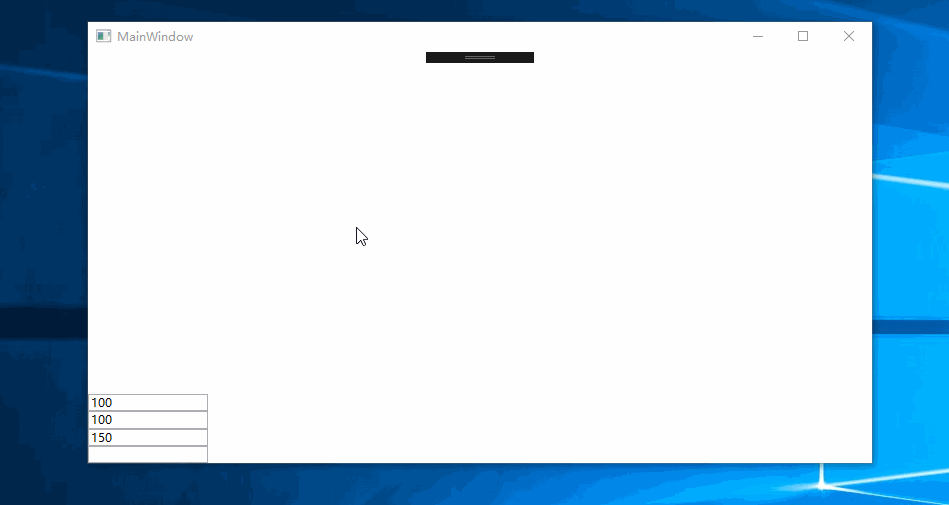在圓形佈局中說過極坐標。 極坐標是長度和邊與極軸之間的角度的坐標表示。 換句話說,只要知道角度和長度(與中心點的距離),我們就能求出這一點的坐標,相對的我們知道這個一點的XY坐標也能求出角度和長度。 極坐標的工具性真的很強,在繪圖,動畫上 有很大的幫助,計算過程要簡單不少。 下麵我給出一個簡單的小慄 ...
在圓形佈局中說過極坐標。
極坐標是長度和邊與極軸之間的角度的坐標表示。
換句話說,只要知道角度和長度(與中心點的距離),我們就能求出這一點的坐標,相對的我們知道這個一點的XY坐標也能求出角度和長度。
極坐標的工具性真的很強,在繪圖,動畫上 有很大的幫助,計算過程要簡單不少。
下麵我給出一個簡單的小慄子
截圖:

using System; using System.Windows; using System.Windows.Input; using System.Windows.Media; using System.Windows.Shapes; namespace 極坐標綜合應用 { /// <summary> /// MainWindow.xaml 的交互邏輯 /// </summary> public partial class MainWindow : Window { public MainWindow() { InitializeComponent(); } private Line DrawLine; private bool IsDraw; private Line SetBaseLine() => new Line() {Stroke=new SolidColorBrush(Colors.Red),StrokeThickness=1.1 }; private void C1_MouseDown(object sender, MouseButtonEventArgs e) { if(e.LeftButton==MouseButtonState.Pressed) { c1.Children.Clear(); IsDraw = true; DrawLine = SetBaseLine(); DrawLine.X1 = e.GetPosition(c1).X; DrawLine.Y1 = e.GetPosition(c1).Y; DrawLine.X2 = e.GetPosition(c1).X; DrawLine.Y2 = e.GetPosition(c1).Y; c1.Children.Add(DrawLine); } } private void C1_MouseMove(object sender, MouseEventArgs e) { if(e.LeftButton==MouseButtonState.Pressed) if(IsDraw==true) { DrawLine.X2 = e.GetPosition(c1).X; DrawLine.Y2 = e.GetPosition(c1).Y; } } private void C1_MouseUp(object sender, MouseButtonEventArgs e) { if (e.LeftButton == MouseButtonState.Released) { IsDraw = false; CoodSystem(); } } private void CoodSystem() { var startpoint = new Point(DrawLine.X1, DrawLine.Y1); var enpoint = new Point(DrawLine.X2, DrawLine.Y2); //轉換為笛卡爾坐標 var sub = Point.Subtract(enpoint, startpoint); var x = sub.X; var y = sub.Y; //轉換公式 sub = new Vector(x, 0 - y); //求出tan var k = y / x; //轉換角度 var angle = 180 / Math.PI * Math.Atan2(y, x); t1.Text = $"{(angle<=0?Math.Abs(angle):360-angle)}度"; } double ToRandion(double angle) => angle * (Math.PI / 180); void Create(Line l1, double angle,double len) { //轉極坐標公式求X值 var x = len * Math.Cos(ToRandion(angle)); //轉極坐標公式求Y值 var y = len * Math.Sin(ToRandion(angle)); //笛卡爾轉屏幕坐標 x =l1.X1 + x; y = l1.Y1 - y; l1.X2 = x; l1.Y2 = y; } Point GetMid() => new Point(c1.ActualWidth / 2, c1.ActualHeight / 2); private void T2_KeyDown(object sender, KeyEventArgs e) { var x =Convert.ToDouble( xt.Text); var y = Convert.ToDouble(yt.Text); var len = Convert.ToDouble(lt.Text); c1.Children.Clear(); DrawLine = SetBaseLine(); DrawLine.X1 = x; DrawLine.Y1 = y; Create(DrawLine, Convert.ToDouble(t2.Text),len); c1.Children.Add(DrawLine); } } }



